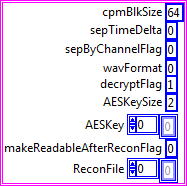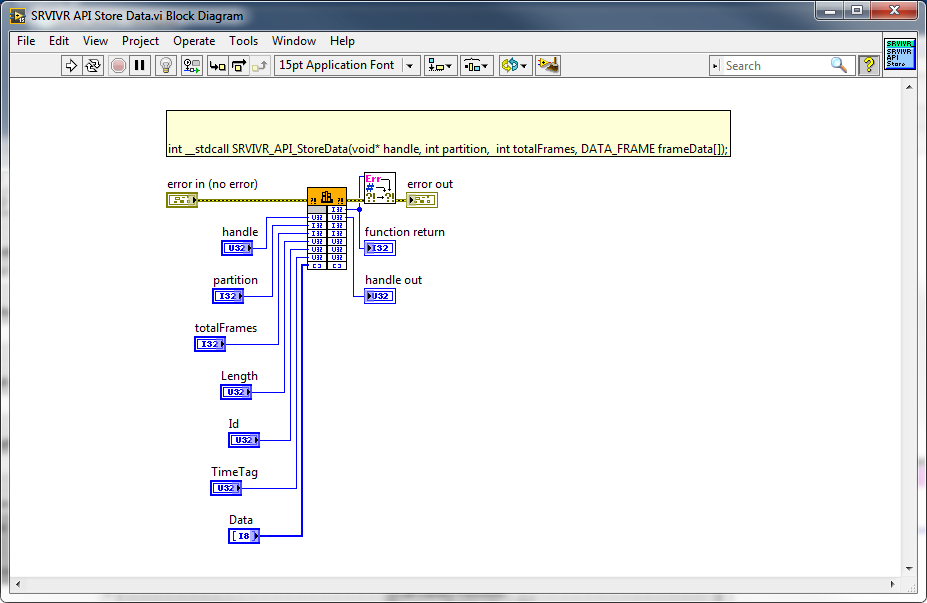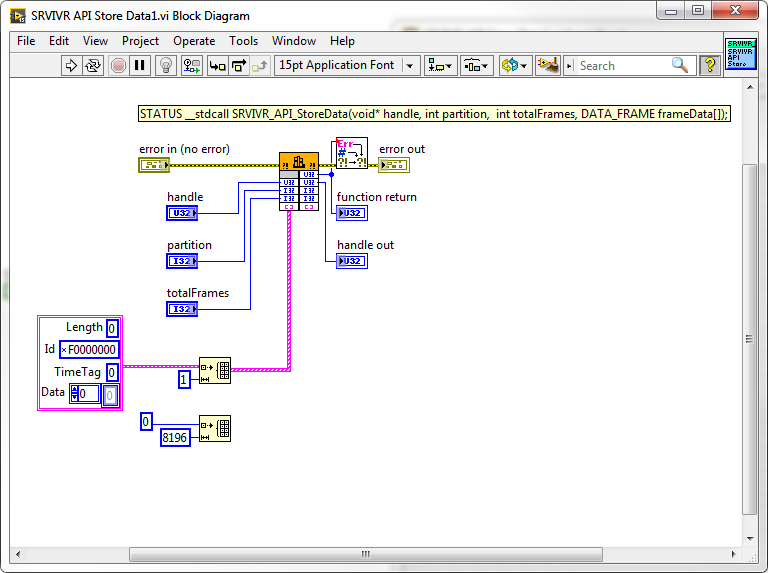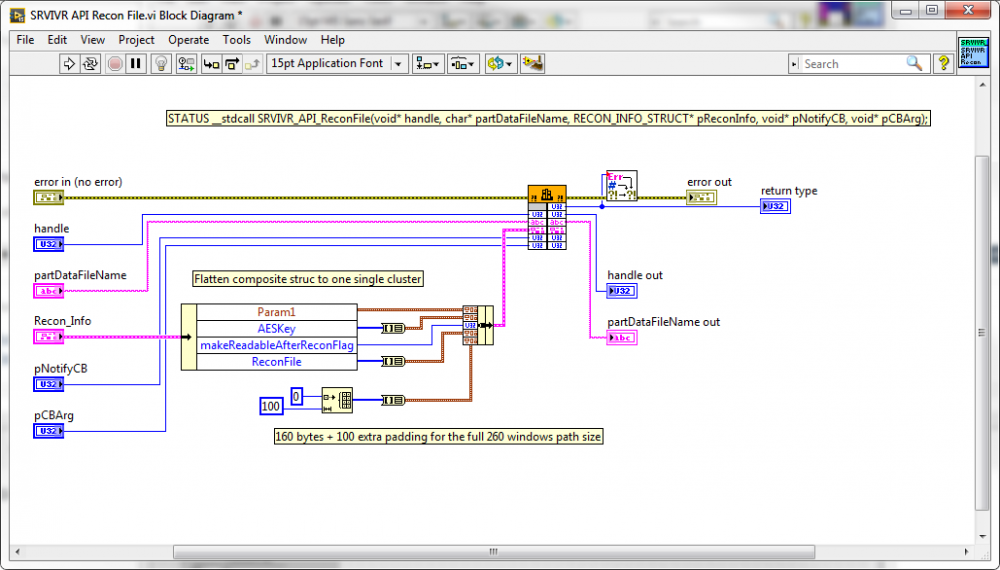-
Posts
466 -
Joined
-
Last visited
-
Days Won
20
Content Type
Profiles
Forums
Downloads
Gallery
Posts posted by viSci
-
-
I would like to obtain a .net reference to an open word document and add a table at the current cursor location in the document. I can already do this using a crude
automated copy and paste method but would like to be able to add a proper word table into the document. Using the .net interfaces I think this is possible but so far
have not been able to get it to work. Has anyone tried to do this before?
-
Hey Neil - I am in the process of designing a 50 node (RT Linux) system with around 100 tags per node. I was briefly thinking about using NSV's or RTI-DDS but now am thinking that OPC-UA would be a better solution for publishing tag values. Do you have any performance metrics like tag updates /s for your implementation?. I have seen some pretty nice OPC UA Client Viewers that function like the NI DSM but would prefer a native LV viewer. Would you consider offering your OPC UA Viewer and Data logger as a toolkit?
-
With the help of my NI inside sales rep, I was able to get a cDAQ Linux installation image and instructions to restore and existing Linux chassis or convert a WES7 to Linux. NI was very protective with this stuff even though the Linus RT source is published on GIthub.
-
 1
1
-
-
I was told if you are within the first 30 days you can send it back to NI and they will replace it with your OS of choice. In my case that is not possible so I have to find a way to do it myself. I found this document
http://www.ni.com/product-documentation/54592/en/
which alludes to being able to restore a cDAQ image or even make it a dual boot device but details are lacking.
-
I have two cDAQ-9133 controllers, one with WES7 and one with LinuxRT. I would like to convert the cDAQ 9133 with WES7 to LinuxRT. Both cDAQ's were purchased 6 months ago to determine the best OS for our application. I have gone through all of the forums and it seems like I might be able to use the NI recovery disk or possibly a disk cloning utility like acronis or similar. Has anyone had success doing this?
-
Sharp LV developer needed for design / implementation of large scale distributed data acquisition system. Skills Needed: LabVIEW Real-Time, Publish Subscribe, Messaging Protocols, Data Distribution Services (like RTI-DDS, RabbitMQ, etc), DB Stored Procedures, Tree Structures, TDMS. This is a 9-12 month contract position in Gainesville, FL. Please send CV to mike.sachs@viscience.com
-
Just curious, what is the advantage of the MQTT implementation over off the shelf RTI-DDS now built into LabVIEW for windows and RT Linux
-
 1
1
-
-
Can TestScript be used with Python v2.7?
-
Started putting together an example and found that the flatten and unflatten work correctly. The problem was in the file write which had the 'convert EOL' option enabled.
Thanks for your help.
-
I often use variant attributes as a quick and dirty dictionary. I found out that I could flatten my 'variant dictionary' and save
the flattened string to a file. I tried to unflatten the saved string and reconstitute the variant and its attributes but am getting an error 116 (Unflatten or byte stream read operation failed due to corrupt, unexpected, or truncated data.)
I am using a variant constant because the variant dictionary I created has no datatype other than the attributes which are all 1D string arrays.
I am beginning to think that this might not be possible to do, but thought I would check in to make sure I am not overlooking something.
-
I am looking for alternatives to using Systemlink to manage a large network of WES7 cDAQ's. I imagine there are many windows server tools out there to manage software deployment, replication, remote monitoring, etc. I am hoping someone might have some experience in this area and could offer a few suggestions on tools that would work well for the NI ecosystem but not require being an IT specialist. Thanks.
-
Systemlink was designed for such use cases. The only negative I have with it is the pricing model which is based on the number of nodes in your network.
-
I was wondering when someone would mention the long forgotten but hopeful promise of Teststand Lite. I doubt after all these years NI is going to provide this. It is likely something that will only happen with community support.
-
Finally, It works! Sometimes a clusterasaurus is just what you need. The cluster within cluster idea is a neat trick, thanks Rolf.
-
Not sure were the 1024 comes in as AES key here is 32 bytes and the ReconFile path is 260 characters. As you said to get 260 I would have to append two clusters.
Here is my latest clusterasaurus...
Unfortunately this still is not satisfying the DLL. It is not blowing up but returning an error indicating an invalid parameter so I might not be too far off...
-
I like the idea of a cluster within a cluster. Is it then possible to just use an array to cluster going into a cluster bundle to add in the fixed arrays?
-
So does every *struct passed into a dll need to be flattened to a byte array? I guess in the previous case it only worked because I was passing a empty array in the cluster.
So for something like this:
// Structure to pass reconstruction parameters
struct RECON_INFO_STRUCT
{
unsigned int cpmBlkSize;
unsigned int sepTimeDelta;
unsigned int sepByChannelFlag; //0=no, 1=yes
unsigned int wavFormat; //0=mulaw, 1=pcm
unsigned int decryptFlag; //0=no, 1=yes
unsigned int AESKeySize; //0=128,1=192,2=256
char AESKey[CRYPTO_KEY_MAX_LENGTH_BYTES];
unsigned int makeReadableAfterReconFlag;
char reconFile[MAX_PATH];
};STATUS __stdcall SRVIVR_API_ReconFile(void* handle, char* partDataFileName, RECON_INFO_STRUCT* pReconInfo, void* pNotifyCB, void* pCBArg);
Do I need to manually flatten everything to a single byte array or is there some way to use this?

-
Ok, that comment prompted me to dig some more into the IDD for the device and found that Length parameter, which I thought was the number of bytes in the data array is really the number of bytes in the data array plus 12 for the 3 long int parameters in the cluster. Once I made that change it all started working.
Thanks for your help!
-
Was hoping someone might be able to give me a tip on this one...
Trying to call the function below:
typedef struct
{
unsigned int Length;
unsigned int Id;
unsigned int TimeTag;
char Data[1024];
}DATA_FRAME;
int __stdcall SRVIVR_API_StoreData(void* handle, int partition, int totalFrames, DATA_FRAME frameData[]);Here is what the import dll tool produces:

This does not look correct to me and produces the dreaded 1097 exception error.
I modified the call to be:

Which I believe is closer to the intent of the original C function, but still gives me a 1097 error. I suspect
that somehow the array pointer that the function is expecting is not correct. The frameData parameter is being passed
into the function as a 'Adapt to Type', Array Pointer. I also tried flattening to a single U32 array and passing that in as an array data type but still no joy. Any ideas?
BTW, I have had success calling many other functions from the dll of the form:
int __stdcall func(void* handle, int param1, int param2, etc);
-
Have been looking at the OPC UA toolkit, it looks pretty cool and as you pointed out has compatibility with a huge selection of 3rd party tools and utilities. It seems like the licensing is free for Linux cRIO's so would just need to purchase the $500 dev toolkit. OPC UA also has a full selection of scaler and array data types and a pretty nice LV API. I was wondering if anyone knows about the OPC UA History Data vi's. It seems like a type of memory resident time series historian but was wondering if it uses any sort of database under the hood.
-
Has anyone looked at NI's new Systemlink / Skyline technology? It looks like a type of DDS running on RabbitMQ that is being used for all future LV software and package deployment for Windows and Linux platforms. Skyline 17.5 has Publish Subscribe tag's, tag viewer and a new web dashboard that can bind to tags. I was informed that in Q2 Skyline will have historical capabilities but am not sure if it could serve as a citadel replacement.
-
There is probably a way to stream from VLC but I have not figured it out yet. I did look at the Blackmagic SDK and played with an example that can stream a solid blue screen to the SDI output. I guess that is a starting point...
-
Shaun - Thanks for the link. There is a DirectShow rendering example given for mms video stream but I could not get it to work. I tried to modify the URL for local media but no luck. I will try to contact the originator of the library...
bbean - Yes Blackmagic does have a nice app that works great. I can use it to stream uncompressed AVI files to my SDI output. The problem is that I need to do this programatically...
-
Thanks for the links. Took a peek but did not see any examples or API's of how to stream video to a directshow output device.


.thumb.jpg.5d2ee2fea691c9fe3fab4270ba8e531d.jpg)

Create table in active word document
in LabVIEW General
Posted
Thanks - I was able to use your suggestion to get the current cursor position and it worked correctly. I was able to construct and insert a proper table in an open word document.